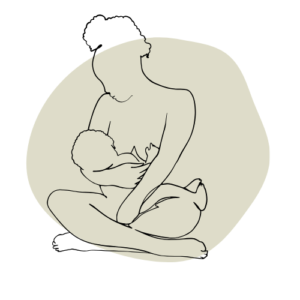Parenting
KEY POINTS
- Attachment parenting promotes strong emotional bonds between parent and child based on attachment theory.
- Despite criticisms, it offers benefits like breastfeeding support and improved child development.
- Overall, it advocates for a sensitive, empathetic approach to parenting, prioritizing the needs of both parent and child.
If you are anything like me then from the instant your gaze first met your newborn, your life’s purpose underwent a profound transformation. Gone are the days filled with solo travel adventures, endless surf sessions, self-care rituals, and romantic outings; instead, I find myself wholeheartedly devoted to my precious new arrivals, with two arms full, clad in yoga pants and tending to their every coo with almost boundless love.
More Styles than stars in the sky
Whether it is in the months (or years) leading up to pregnancy or somewhere along the way after those first sleepless nights and around the clock feedings sessions have somewhat calmed down, at some moment most a parent will be coming to some sort of decision on ‘how to parent’ and what ‘style’ of parenting best fits their beliefs and family dynamic.
But before you find yourself at the bottom of yet another google rabbit whole unable to pick the perfect parenting style from the hundreds of possible styles for you, don’t worry, you don’t need to pick one, and you don’t need to follow anyones guidelines to the letter. Please don’t. I am a firm believer that the best advise ever given is to learn to follow your own guidance and intuition.
Theoretical Basis
I was introduced to the concept of ‘Attachment’ by my coach and therapist, who noticed a recurring pattern in my interpersonal relationships. Until then, I had never come across the term. For years, I believed something within me was ‘broken,’ yet I couldn’t pinpoint any specific ‘traumatic event’ that might have caused my lifelong difficulty in forming stable friendships or romances. Discovering attachment theory felt like finding the missing piece of the puzzle.
What is the attachment theory?
You’ve likely heard it said before: your relationships with your parents serve as a blueprint for your future (romantic) relationships. This concept intuitively resonates because the way your parents interact with you helps shape your self-perception and your perception of others, ultimately influencing your expectations in relationships. Whether positively or negatively, your parents leave a lasting imprint, molding your attitudes and behaviors towards love.
Developed by psychologist John Bowlby, attachment theory posits that infants have an innate, evolutionary drive to form an emotional bond with their caregiver, typically one of their parents. This bond is crucial for survival, as infants rely entirely on their caregivers for sustenance and protection.
The core principle of attachment theory is that infants learn to elicit attention from their caregivers to fulfill their needs. If a caregiver consistently and promptly responds to the child’s needs, the child develops a sense of security in their attachment. However, if the caregiver is inconsistent or unresponsive, the child may resort to extreme behaviors to gain attention, leading to an insecure attachment.
The quality of this attachment carries significant weight throughout life. The dynamics established with primary caregivers in infancy persist into adulthood and shape one’s interactions with others, particularly in romantic relationships.
What are the 4 attachment styles?

Psychologist Mary Ainsworth, who worked with Bowlby’s research team, conducted a famous study to learn how children reacted when their primary caregiver left the room. Based on their response, she categorized children into three attachment styles:
- Secure attachment, Individuals with a secure attachment style feel comfortable both with intimacy and with being independent. They are able to trust their partners, communicate openly, and seek support when needed. They’re the relationship equivalent of a warm hug and a reassuring ‘I’ve got your back.'”
- Anxious attachment: People with this attachment style often fear rejection and abandonment. They may become overly dependent on their partners for reassurance and validation, and they may exhibit clingy or needy behavior. They’re the ones who send ten texts in a row and then panic when they don’t get an immediate response.
- Avoidant attachment. Individuals with a dismissive-avoidant attachment style tend to avoid intimacy and emotional closeness. They may prioritize independence and self-reliance, downplaying the importance of relationships and suppressing their emotions. They’re like the mysterious lone wolf who disappears into the woods whenever someone mentions commitment.
- Disorganized attachment. This attachment style is characterized by a combination of anxious and avoidant tendencies. People with a fearful-avoidant attachment may desire closeness but also fear getting hurt, leading to a push-pull dynamic in their relationships. They may struggle with trust issues and have difficulty regulating their emotions in relationships.
Attachment Theory vs Attachment Parenting
After realizing I might be an anxious attached person, I dove into understanding the potential impact of not having a secure attachment growing up. Naturally, I became intrigued by breaking the cycle and began my quest to give my kids the best shot at secure attachment. That’s when I stumbled upon attachment parenting.
Attachment parenting, a parenting philosophy rooted in attachment theory, focuses on building strong physical and emotional bonds between parents and infants through specific “tools.” These tools aim to boost empathy, responsiveness, and physical touch to the max.
The idea is that this approach not only bolsters the confidence of both parent and child but also ensures that the parent becomes a pro at reading and meeting their baby’s needs, while the baby feels utterly secure that their demands won’t go unanswered.
Basic principles of attachment parenting






1. Birth bonding
Attachment parenting regards the bonding period between mothers/fathers and babies in the first six weeks after birth as crucial for establishing a strong, enduring parent-child attachment. This approach advocates for skin-to-skin contact and continuous closeness between parent and baby, with an emphasis on nurturing, particularly from the mother.
2. Breastfeeding
Attachment parenting values breastfeeding as a vital means of nurturing and comforting your baby in a healthy manner. It encourages physical closeness and provides opportunities for responding promptly to your baby’s hunger cues. Additionally, breastfeeding stimulates the release of hormones in a mother’s body that may enhance her maternal instincts.However, there are instances and reasons why breastfeeding might not be feasible for you. While science and the principles of attachment parenting promote breastfeeding as the best source of nutrition for infants, it’s essential to acknowledge that alternative feeding methods exist to meet your baby’s nutritional needs while still fostering mother-baby bonding. Ultimately, the decision to breastfeed is deeply personal and should be guided by what allows both you and your baby to thrive.
3. Baby wearing
You’ve probably come across various wraps, slings, and carriers, but what’s the fuss about babywearing? Well, in line with attachment parenting, babywearing fosters physical closeness and builds trust between the baby and their caregiver. It allows babies to safely explore their surroundings while being close to their parents, creating a symbiotic relationship where both parents and babies can learn from each other through this shared intimacy.
4. Bed-sharing
Co-sleeping allows parents and babies to maintain close proximity throughout the night, promoting feelings of security and trust. This practice can enhance bonding between parent and child, as well as
facilitate breastfeeding and responsiveness to the baby’s needs. However, it’s important for parents to prioritize safety guidelines to ensure a safe sleeping environment for their baby while co-sleeping
5. Belief in baby’s cries
In attachment parenting, a baby’s cries are seen as their way of communicating a need, rather than a form of manipulation. Attachment parents prioritize sensitively responding to their baby’s cries, aiming to cultivate trust between infant and caregiver while gaining insight into their baby’s unique communication style.
6. Balance and boundaries
Finding balance in parenthood is no walk in the park. One moment, everything seems smooth sailing, and the next, you’re caught in a storm with a broken sail. So, achieving perfect balance is an impossibility for most if not all of us, especially during the early days of parenting an infant (and throughout the emotionally turbulent toddler years). This is because you’re constantly navigating the shifting needs of your baby, yourself, your partner, and all your other commitments. Your status update? It’s complicated.
At its core, attachment parenting encourages attentiveness to your baby, yourself, and the needs of your family members. It’s about finding ways to respond calmly and appropriately to situations, being willing to ask for help when needed (which, let’s admit, isn’t always easy) and being able to set and keep boundaries (which, for some of us, is even more difficult than asking for help). Luckily, according to this research, we only need to be ‘good enough’ parents for 50% of the time.
7. Beware of baby trainers.
In contrast to attachment parenting, other schedule-based parenting styles embrace a “baby training” approach. This approach, exemplified by techniques like “cry it out,” seeks to foster independence between infant and parent while adhering to rigid schedules for feeding and sleeping.
Attachment parenting, on the other hand, recognizes babies’ cries as their primary means of communication, empowering the baby to express their needs rather than the parent imposing them. While much of the parenting advice in recent Western history has focused on parental convenience, attachment parenting prioritizes the child’s needs and is driven by them.
Cons of Attachement Parenting
During my first pregnancy and in the early days with my newborn, I often felt bombarded with unsolicited advice, albeit well-intentioned. As someone who was insecure about parenting at the time, this influx of advice left me feeling anxious and uncertain. It seemed like everyone else knew what to do better than I did, yet the advice I received was often conflicting. For example, when I picked up my crying baby immediately, I was warned not to spoil them. Additionally, I faced criticism for choosing to breastfeed for over three months, as well as for embracing co-sleeping, which I and my baby both enjoyed. Despite the benefits, co-sleeping is often criticized as the most prominent downside of attachment parenting. However, research on the supposed dangers of bed sharing is limited, and there are safe ways to practice co-sleeping. For those uncomfortable with bed sharing, practical co-sleepers can be attached to the parent’s bed or the baby can sleep in the same room. It’s essential to choose what feels right for you, as a happy momma translates to a happy baby.
Implementing attachment parenting techniques can also be physically and emotionally demanding, particularly for the primary caregiver, usually the breastfeeding mother. The emphasis on on-demand breastfeeding and constant physical closeness may disrupt the mother’s ability to establish healthy sleep patterns, return to work, or maintain intimacy with her partner, at least temporarily. Therefore, some families may find that attachment parenting tools do not align well with their lifestyle.
However for me, putting most of the guidelines from attachment parenting into practice, it felt like the most natural and easy way to take care of my new born and with my second the only thing I did different was not caring so much about what everyone else had to say about it.
Pros of attachment parenting
The most research-supported benefit of attachment parenting might be connected to breastfeeding and its many proven medical, nutritional, developmental, and neuromotor benefits. According to the AAP policy published in 2012, breastfeeding is recommended exclusively for up to 6 months and continued with solids for up to 1 year or longer.
An 2019 meta-analysis showed that children raised by parents that were in tune and attentive to their emotional and physical needs were over two times more likely to develop better language skills than children who did not experience this style.
Another advantage of attachment parenting is the development of emotional regulation skills. Research from 2010 article suggests that infants raised in a highly responsive parenting environment cry less and exhibit lower distress levels. Furthermore, older infants and children who experience responsive parenting demonstrate improved emotional regulation abilities, effectively managing feelings of fear, anger, and distress.
As a result, this decrease in stress exposure can have a beneficial impact on brain development and enhance the ability to manage stress in adulthood.
The takeaway
Welcoming a newborn can bring immense changes to your life. Mom guilt is not a joke, so stay focussed on what works for you and cherry pick from the various parenting styles that you resonate with.
What I love most about attachment parenting lies in cultivating a responsive parenting approach that addresses my child’s emotional and physical needs with sensitivity and empathy.
For those curious about attachment parenting, here are my favourite books to delve deeper into the topic.
- Raising a Secure child: This book changed my life. It provides a very simple but powerful view on how to balance nurturing and protectiveness with promoting your child’s independence. I absolutely loved the vivid stories and practical tools.
- Sleeping with Your Baby: If you are curious about sleeping together with your baby but are not sure if it’s safe or how to make it safe. Sleeping With Your Baby is the book for you.
- The Other Baby Book describes natural birth practices and attachment parenting techniques parents can use in the first year of their baby’s life, including co sleeping, breastfeeding, baby wearing and baby led weaning.
- Peaceful Parent, Happy Kids. If you are tired of tantrums and often find yourself unsure of what to do to get your kid to cooperate this book is a game changer.
Please note that certain links provided above are affiliate links. If you choose to make a purchase through these links, I may receive a small commission at no additional cost to you. This helps support my website, and I am deeply grateful for your contribution. Thank you!

Hi There

I'm Mare
I’m the face behind this blog. As a solo mom, every day is a new adventure, and I’m determined to make the most out of life with my two wonderful daughters by my side. Through my journey, I’ve learned to cherish every moment, big or small. From the giggles and laughter to the challenges and tears, each experience shapes our story in its own unique way. Becoming a mother and being a mother didn’t come easy to me so it took a lot of research and thought to get to be more comfortable with my new role in life. And it’s a work in progress. Here in my corner of the internet, I share my thoughts, experiences, and insights as I navigate the highs and lows of motherhood. It’s a journey filled with love, learning, and plenty of surprises along the way.
Must Reads
From the Blog

